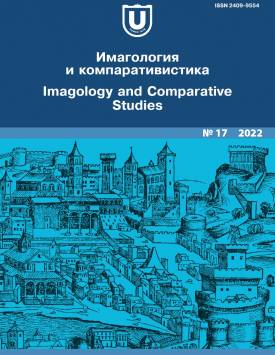The First Translations of Aleksandr Pushkin’s Eugene Onegin Into Italian
The article analyses two early translations of Aleksandr Pushkin’s Eugene Onegin into Italian. The first Italian critics of Eugene Onegin in the 19th century (Cesare Boccella, Enrico Montazio, Carlo Tenca) were convinced that the novel was weak and did not deserve to be translated. However, two translations appeared in the 19th century. The first translation of 1856 belongs to Louis Delatre, a Frenchman who assimilated in Italy. Delatre visited Russia, where he met Pyotr Vyazemsky, whose stories about Pushkin inspired Delatre to translate five of Pushkin’s works, including Eugene Onegin. The second translation was published in 1858 under the pseudonym A. B., currently attributed to A. Besobrasoff - Anna Ivanovna Bezobrazova, a Russian noblewoman. Comparing the original and the translations, the author identifies and describes the aspects of the original subject to translation shifts (genre definition, structure, lexical and stylistic levels) and determines the specificity of the early Italian reception of the novel. Louis Delatre. The translation of poetry into prose, the rearrangement of fragments within the text, the reduction of “useless details” (including significant structural elements of the original), the addition of notes, the replacement of Russian realities with Italian equivalents reveal an orientation towards greater clarity and ease of perception. The change in the style of the original and the focus on the Italian literary tradition indicate the identification of a foreign work through the prism of Italian culture. The factors stated above are indicative of the adaptation and orientation towards an unprepared reader, who is not familiar with a foreign culture. Delatre acts within the framework of the historically conditioned norms of translation practice, whose task at this stage is to bring the original closer to the reader, to facilitate his acquaintance with a foreign text. Anna Besobrasoff. On the one hand, the focus on the “plot”, the search for Italian equivalents, the addition of notes and descriptions are also characteristic of a historically conditioned adaptive translation strategy. On the other hand, literal translation, style neutralization, elimination of a specific group of “useless details” are rather typical of the translator’s individual reception, probably a consequence of the student’s goal of translation, the translator’s desire to “practice the beautiful Italian language.” Both translations did not attract the attention of literary criticism and did not significantly influence the formation of the idea of Eugene Onegin in Italy at an early stage. The first Italian translations were more an accident rather than a regularity, since they stemmed from the translators’ personal interest in the novel, rather than a request from the recipient culture. This can be confirmed by the date of the next translation - it appeared only in 1906. The author declares no conflicts of interests.
Keywords
L. Delatre, A. Besobrasoff, Eugene Onegin, literary translation, Pushkin studies, Russian-European literature connectionsAuthors
| Name | Organization | |
| Tik Natalia A. | Tomsk State University | tiknataly@yandex.ru |
References

The First Translations of Aleksandr Pushkin’s Eugene Onegin Into Italian | Imagologiya i komparativistika – Imagology and Comparative Studies. 2022. № 17. DOI: 10.17223/24099554/17/3
